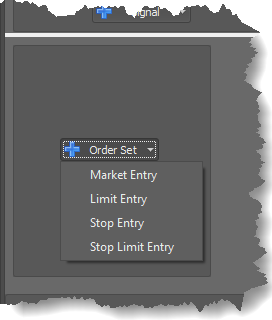Did you know that 90% of day traders lose money? But don’t let that scare you off; with the right strategies, you can be part of the successful 10%! In this article, we break down effective day trading strategies for short-term success. We cover essential topics like developing a solid day trading plan, choosing the right stocks, and using key indicators. You'll learn how to manage risk, set profit targets, and avoid common mistakes. Plus, we’ll explore the importance of timing, technical analysis, and how to adapt your strategies to market changes. With insights from DayTradingBusiness, you’ll be well-equipped to navigate the fast-paced world of day trading.
What are the best day trading strategies for beginners?
The best day trading strategies for beginners include:
1. Scalping: Make quick trades for small profits, focusing on high liquidity stocks.
2. Momentum Trading: Buy stocks that are trending up and sell when momentum shifts.
3. Breakout Trading: Identify key resistance levels; buy when the price breaks above and sell on pullbacks.
4. Reversal Trading: Look for overbought or oversold conditions to capitalize on price reversals.
5. News Trading: Trade based on news releases and earnings reports that can cause significant price movement.
Focus on risk management, set stop-loss orders, and practice with a demo account before trading with real money.
How can I develop a day trading plan?
To develop a day trading plan, start by defining your trading goals, including profit targets and risk tolerance. Choose a specific market or asset class to focus on, like stocks or forex. Establish clear entry and exit strategies based on technical analysis or market trends. Set strict stop-loss orders to manage risk effectively. Determine your trading schedule, deciding how many hours per day you'll dedicate to trading. Finally, regularly review and adjust your plan based on performance and market changes.
What indicators should I use for day trading?
For effective day trading, use these indicators:
1. Moving Averages: Helps identify trends by smoothing price data.
2. Relative Strength Index (RSI): Measures price momentum to spot overbought or oversold conditions.
3. Bollinger Bands: Indicates volatility and potential price reversals.
4. MACD (Moving Average Convergence Divergence): Shows momentum and trend direction.
5. Volume: Confirms trends and signals potential reversals based on trading activity.
6. Stochastic Oscillator: Compares closing price to its price range, useful for identifying overbought/oversold conditions.
Combine these indicators to create a robust strategy for short-term trading success.
How do I manage risk in day trading?
To manage risk in day trading, set a strict stop-loss for each trade, typically no more than 1-2% of your trading capital. Diversify your trades to avoid overexposure to a single asset. Use position sizing to control how much of your capital is at risk on each trade. Stick to a trading plan and avoid emotional decisions. Regularly review and adjust your strategies based on performance to identify what works best for you.
What are the key principles of successful day trading?
The key principles of successful day trading include:
1. Risk Management: Limit losses with stop-loss orders and never risk more than 1-2% of your capital on a single trade.
2. Market Research: Stay informed about market trends, news, and economic indicators that can impact stock prices.
3. Technical Analysis: Use charts and indicators to identify entry and exit points. Focus on patterns, volume, and momentum.
4. Discipline: Stick to your trading plan and avoid emotional decision-making. Consistency is crucial.
5. Time Management: Be aware of market hours and plan your trades around peak volatility for better opportunities.
6. Adaptability: Be ready to adjust strategies based on market conditions and your trading performance.
7. Focus on Liquid Stocks: Trade stocks with high volume to ensure quick entry and exit without significant price swings.
8. Continuous Learning: Regularly analyze your trades, learn from mistakes, and stay updated on trading strategies.
Implement these principles to enhance your day trading success.
How can I choose the right stocks for day trading?

To choose the right stocks for day trading, focus on these key factors:
1. Liquidity: Look for stocks with high trading volumes. This ensures you can enter and exit positions quickly.
2. Volatility: Select stocks that show significant price movements throughout the day. Higher volatility means more opportunities for profit.
3. News and Events: Monitor stocks with upcoming earnings reports, product launches, or major announcements. These can drive price fluctuations.
4. Technical Analysis: Use charts and indicators to identify trends and potential entry/exit points. Look for patterns like breakouts or reversals.
5. Sector Performance: Pay attention to sectors that are trending. Stocks in strong sectors often move together, offering better trading chances.
6. Risk Management: Choose stocks you can afford to lose on. Set stop-loss orders to minimize potential losses.
By combining these strategies, you can effectively pick stocks that align with your day trading goals.
What is the importance of timing in day trading?
Timing in day trading is crucial because it directly impacts entry and exit points, which determine profitability. Entering a trade at the right moment can maximize gains, while poor timing can lead to losses. Quick decision-making is essential; market conditions change rapidly, and missing a key price movement can mean the difference between a winning and losing trade. Additionally, understanding market trends and volatility helps traders capitalize on short-term price fluctuations effectively. Proper timing also aids in risk management, allowing traders to set effective stop-loss orders and protect their capital.
How can I use technical analysis in day trading?
To use technical analysis in day trading, focus on key strategies:
1. Chart Patterns: Identify patterns like head and shoulders or flags to predict price movements.
2. Indicators: Use tools like moving averages, RSI, and MACD to signal entry and exit points.
3. Volume Analysis: Monitor trading volume to confirm trends; higher volume often means stronger movements.
4. Support and Resistance: Determine these levels to find potential reversal points and set stop-loss orders.
5. Time Frames: Analyze multiple time frames (e.g., 1-minute, 5-minute) to refine your trades.
Combine these elements for better decision-making and increased chances of short-term success.
What role does market news play in day trading?
Market news plays a crucial role in day trading by influencing price movements and volatility. Traders rely on breaking news, economic reports, and earnings announcements to make quick decisions. Positive news can drive stock prices up, while negative news can lead to sharp declines. Staying updated allows traders to anticipate market reactions and capitalize on short-term opportunities. Effective day trading strategies involve integrating market news analysis to time entries and exits for maximum profit.
How do I set profit targets and stop-loss orders?

To set profit targets, determine your desired risk-reward ratio, typically 2:1 or 3:1. Calculate your target price by adding this ratio to your entry price. For stop-loss orders, identify key support levels or set a percentage below your entry price, commonly 1-2%. Adjust these levels as your trade progresses to lock in profits or minimize losses. Use chart patterns and market conditions to refine your targets and stops for better effectiveness.
What are the common mistakes to avoid in day trading?
Common mistakes to avoid in day trading include:
1. Lack of a Trading Plan: Entering trades without a clear strategy leads to impulsive decisions.
2. Overtrading: Taking too many trades in a day can increase costs and reduce focus.
3. Ignoring Risk Management: Not setting stop-loss orders can result in significant losses.
4. Chasing Losses: Trying to recover losses by taking more risky trades often leads to bigger problems.
5. Neglecting Market Research: Failing to stay informed about market news can result in missed opportunities or unexpected losses.
6. Emotional Trading: Allowing fear or greed to dictate trades can cloud judgment.
7. Not Keeping a Trading Journal: Without tracking trades, it's hard to learn from mistakes and improve strategies.
Avoiding these pitfalls can enhance your chances of success in day trading.
Learn about Common Mistakes in Day Trading Scalping and How to Avoid Them
What are the most effective day trading strategies for beginners aiming for short-term success?
Effective day trading strategies for short-term success include scalping, momentum trading, and range trading. Scalping focuses on quick trades to capture small price movements. Momentum trading capitalizes on stocks that are moving significantly in one direction. Range trading involves identifying support and resistance levels to buy low and sell high. Always use stop-loss orders to manage risk.
Learn more about: Day Trading Strategies for Beginners
Learn about Day Trading Strategies for Beginners
How can I stay disciplined while day trading?
To stay disciplined while day trading, set clear goals for each trading session. Stick to your trading plan and avoid impulsive decisions. Use stop-loss orders to manage risk effectively. Keep a trading journal to track your performance and emotions. Limit distractions by creating a focused trading environment. Regularly review and adjust your strategies based on what works and what doesn’t. Practice patience and don’t chase losses; wait for the right opportunities.
Learn about How to Stay Disciplined in Futures Day Trading
What types of orders should I use in day trading?
In day trading, use market orders for immediate execution, limit orders to set your price, and stop-loss orders to manage risk. Market orders help you enter or exit quickly; limit orders give you control over entry points; stop-loss orders protect your capital by automatically selling when a price hits your predetermined level. These strategies help maximize gains while minimizing losses.
How do I evaluate my day trading performance?

To evaluate your day trading performance, track your trades meticulously. Record entry and exit points, position sizes, and profit or loss for each trade. Calculate your win rate by dividing winning trades by total trades. Assess your average profit per trade versus your average loss per trade to understand your risk-to-reward ratio. Review your trading journal regularly to identify patterns or mistakes. Adjust your strategies based on this analysis to improve your short-term success.
Learn about How to Evaluate Day Trading Brokers
What tools and platforms are best for day trading?
The best tools and platforms for day trading include:
1. Trading Platforms:
– TD Ameritrade's thinkorswim: Offers advanced charting tools and real-time data.
– E*TRADE: User-friendly interface with robust analytics.
– Interactive Brokers: Low commission rates and extensive market access.
2. Charting Software:
– TradingView: Excellent for custom charts and social trading features.
– MetaTrader 4/5: Popular for forex trading with automated trading options.
3. Market Data Tools:
– Bloomberg Terminal: Comprehensive financial data and analytics (high cost).
– Yahoo Finance: Free access to stock quotes and news.
4. News Feeds:
– Reuters: Timely updates on market-moving news.
– CNBC: Offers real-time news relevant to day traders.
5. Stock Screeners:
– Finviz: Filters stocks based on various criteria for quick analysis.
– StockCharts: Great for technical analysis and screening.
6. Risk Management Tools:
– Trading journals: Tools like Edgewonk help track trades and performance.
– Stop-loss orders: Essential for minimizing losses on trades.
Using these tools effectively can enhance your day trading strategies for better short-term success.
How can I adapt my strategies to changing market conditions?
To adapt your day trading strategies to changing market conditions, first analyze current trends and volatility. Use technical indicators like moving averages or the Relative Strength Index (RSI) to gauge market momentum. Adjust your risk management by tightening stop-losses in volatile markets and widening them during stable periods. Stay informed about economic news and events that can impact stocks. Diversify your trades to reduce risk, and be flexible—if a strategy isn’t working, be ready to pivot quickly. Regularly review and refine your approach based on performance metrics.
Conclusion about Effective Day Trading Strategies for Short-Term Success
In summary, mastering effective day trading strategies requires a solid foundation in planning, risk management, and market analysis. By focusing on key principles, utilizing relevant indicators, and remaining disciplined, traders can enhance their chances of short-term success. Don't overlook the importance of timing, technical analysis, and staying updated on market news. For ongoing support and comprehensive resources, DayTradingBusiness is here to guide you through your trading journey.